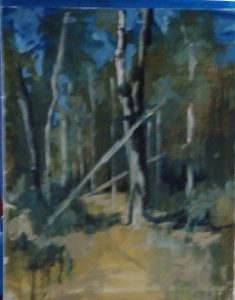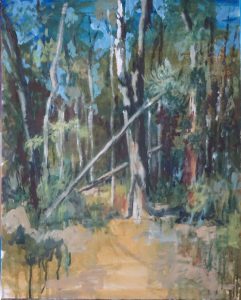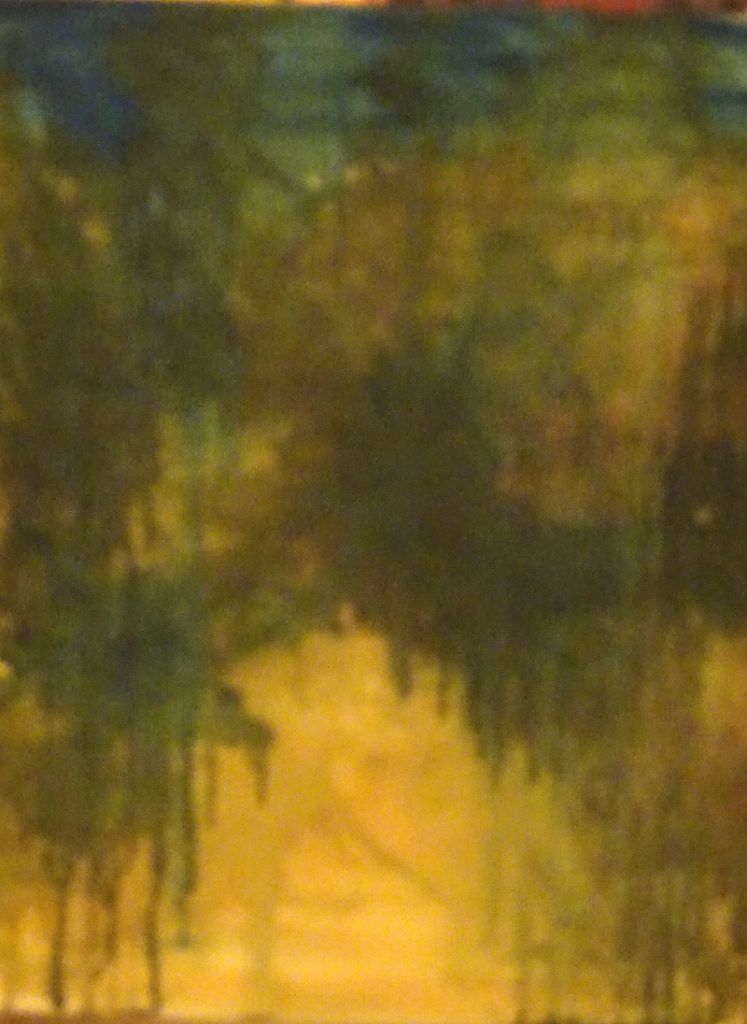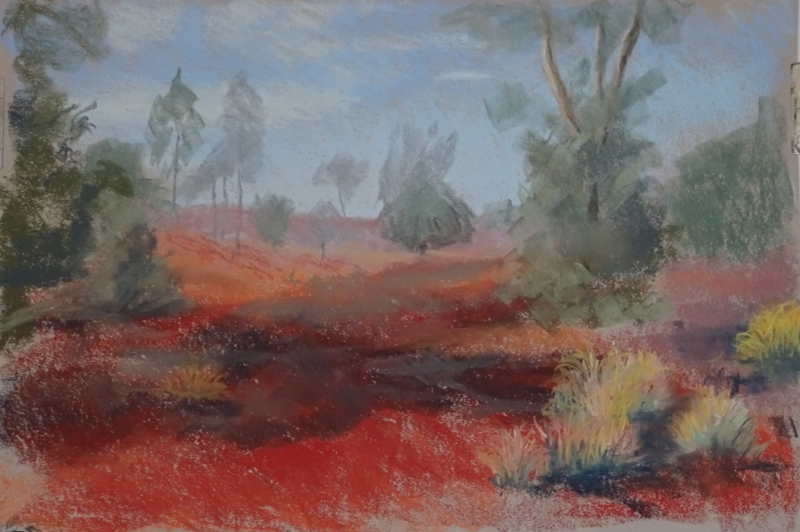This is the fascinating stage, “fishing” for the picture. By dint of adding true darks and some lights, the image is called from the background. The underpainting supplies the mystery, while various splodges deepen shadows or splash the light. It is essential that nothing is created whole, superimposed on the background. Just by pushing and pulling the tones, the trees leap forward, or fade into view, thereby allowing you into the painting .
 It’s so much more exciting than painting trees and makes for a more integrated picture – concentrated work, especially if one starts without drawing. With something like this, atmosphere wins over accuracy, so drawing is not necessary. In any case, being an oil painting, anything “wrong” can be scrapped off or painted out.
It’s so much more exciting than painting trees and makes for a more integrated picture – concentrated work, especially if one starts without drawing. With something like this, atmosphere wins over accuracy, so drawing is not necessary. In any case, being an oil painting, anything “wrong” can be scrapped off or painted out.
I felt the image was a little “cold” so I introduced the Burnt Sienna unmixed with blue on one of the trunks and on the ground. I also warmed up some of the darks by making them more brown than blue.
 The greens in the foreground are quite bright, but I didn’t want to do them too soon. More pale, more muted greens make a good base for brighter colours and add to the variety of tone which in turn adds interest to the picture. Sometimes I have darkened the background allowing the underpainting to provide the trunks, a great way to create an impenetrable forest! still lots to do – and I haven’t even started on the foreground yet.
The greens in the foreground are quite bright, but I didn’t want to do them too soon. More pale, more muted greens make a good base for brighter colours and add to the variety of tone which in turn adds interest to the picture. Sometimes I have darkened the background allowing the underpainting to provide the trunks, a great way to create an impenetrable forest! still lots to do – and I haven’t even started on the foreground yet.




